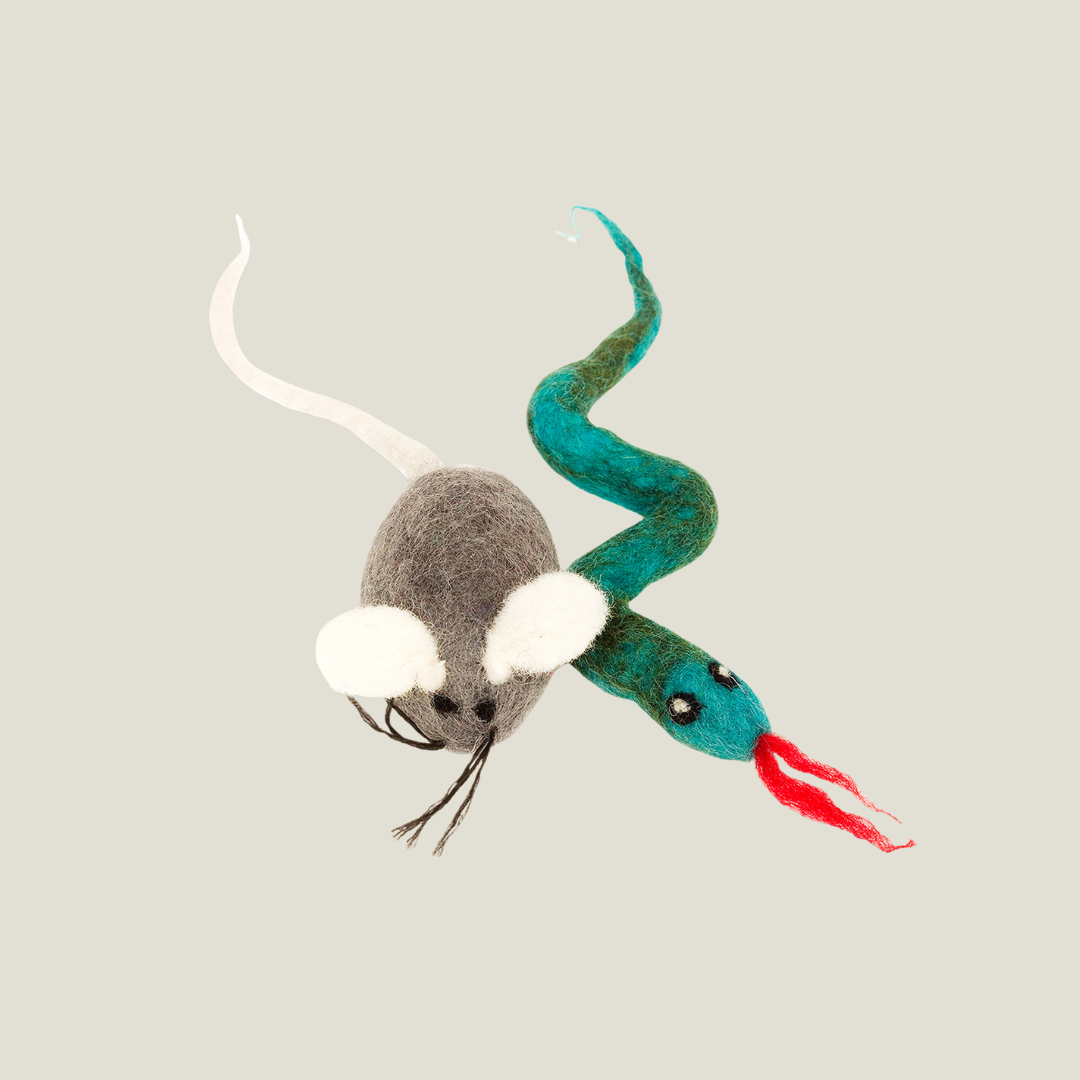We can't find the internet
Attempting to reconnect
Something went wrong!
Hang in there while we get back on track
When you buy through links on our site, we may earn an affiliate commission. Learn more
pet toys
By Rachel Geyer
Your pet deserves the best — and so does the planet. Pet toys are often made of cheap, unsustainable materials, but instead, you can keep your furry friend entertained with these sustainable pet toy options!
Common Pet Toy Materials
Pet owners know both dogs and cats can go through toys pretty quickly. If your pet is always needing new toys, why not opt for sustainable replacements?
Most toys in your local pet store are going to be made of synthetic materials such as vinyl, PCV, nylon, and polyester. There are quite a few problems with these kinds of materials. They are all types of plastic, which is something to avoid.
Nylon and polyester are fabrics that can persist in the environment for 20 to 200 years. Vinyl and PVC are closely related materials that can persist for over 450 years. As these materials break down, they form smaller particles called microplastics. With their small size, microplastics have worked their way into our waterways, soil, food, and even bodies.
The chemicals that make up these materials can also be harmful. If your pet is going to be chewing on these toys, you want to make sure that harmful chemicals aren’t leaching off them. Some toxins found in pet toys are phthalates, BPA, and arsenic, which can create endocrine, reproductive, and digestive health problems for your pet.
Rubber is a bouncy, chewy, durable material that is great for pet toys, especially big chewers. Natural rubber is extracted from rubber trees (Hevea brasiliensis), but synthetic rubber is made from petroleum — basically another form of plastic.
Natural rubber isn’t harmful to your pet, but it’s one of the leading causes of deforestation. The rubber tree is indigenous to South America, but it is being grown in tropical regions all over the world to fuel the rubber industry. Forests are cut down to make room for rubber tree plantations, destroying habitats and reducing biodiversity.
Sustainable Pet Toy Materials
Instead, try some more natural and sustainably sourced pet toys! A big thing to look for is whether the toy can be composted when your pet is done with it. Composting recycles natural materials back into the earth and can create rich nutritious soil for your plants. This keeps these materials out of landfills and allows them to naturally break down instead of rotting and producing methane, a greenhouse gas even more potent than carbon dioxide.
Some compostable materials that are used in pet toys are cotton, hemp, and wool. Not to be confused with marijuana, hemp does not contain high amounts of the THC compound and is perfectly safe for industrial (and pet) use. Hemp can be made into a durable material perfect for the wear and tear pet toys go through.
Three brands we chose get creative with their sustainable materials:
BetterBone uses wood flour and sugarcane oil to make a tough, durable bone with natural ingredients.
West Paw uses a recyclable plastic blend they call Zogoflex to retain the look and feel of mainstream plastic toys, but they make each toy out of old ground-up toys. By keeping the same materials in the loop, West Paw is finding a way to use existing plastics sustainably instead of tossing them aside.
The Foggy Dog runs a line of upcycled denim dog toys. Upcycling is when waste is repurposed into something else. This may sound similar to recycling, but recycling turns a material, such as plastic, into new plastic, whereas upcycling has unlimited possibilities.
Product Sourcing
Transportation is a huge producer of greenhouse gases and other air pollutants. The closer any product is, the more you’re cutting down on the transportation costs of getting that good to you. Try to shop for products made and sourced in your country as much as possible!
An easy way to cut down on transportation costs and general consumption is to make your own pet toys! Cat owners especially know that pets can have fun with just about anything. While they’d be happy with some ribbons or paper bags on the ground, there are plenty of easy DIY dog and cat toy instructions on the internet for more structured play. Try using items around the house like yarn, paper towel rolls, cardboard, or old t-shirts, and get creative with your pets — consider it upcycling. It’s the cheapest and most sustainable option out there!
Sources
- https://vinyl.org.au/about-vinyl
- https://everydayrecycler.com/is-nylon-plastic/
- https://cfda.com/resources/materials/detail/polyester
- https://www.close-the-loop.be/en/phase/3/end-of-life
- https://maesindopaperpackaging.com/does-plastic-decompose-how-long-does-it-take/
- https://oceanservice.noaa.gov/facts/microplastics.html
- https://www.preventivevet.com/dogs/how-to-find-safe-non-toxic-dog-toys
- https://www.ncbi.nlm.nih.gov/pmc/articles/PMC7547924/
- https://www.linkedin.com/in/claire-sexton-29b310223/
- https://www.britannica.com/science/rubber-chemical-compound
- https://www.worldwildlife.org/magazine/issues/winter-2016/articles/making-the-production-of-rubber-better-for-the-planet
- https://www.nrdc.org/stories/composting-101#benefits
- https://www.epa.gov/sustainable-management-food/sustainable-management-food-basics
- https://www.britannica.com/plant/hemp
- https://thebetterbone.com/blogs/news/betterbone-ingredients-your-ultimate-guide-to-natural-food-grade-sustainable-and-co2-emission-reducing-dog-chews
- https://www.westpaw.com/pages/made-responsibly
- https://www.thefoggydog.com/blogs/news/upcycled-denim-behind-the-scenes
- https://upcyclethat.com/about-upcycling/
- https://www.epa.gov/transportation-air-pollution-and-climate-change/carbon-pollution-transportation
Want more? Become an Intentful Consumer!
Get updates on new research and products. Upvote, comment, and add suggestions to help others.



